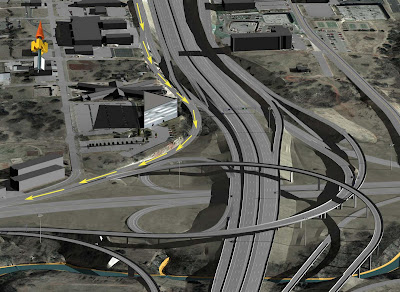
Bridges in New York and across America are well into middle age, and much like some people of that certain age, are deteriorating faster than they are being cared for.
A report issued Tuesday by the not-for-profit group Transportation for America put New York near the average nationally, with about 12 percent of the state's 17,365 bridges rated as structurally deficit. That is better than the worst, Pennsylvania, at 27 percent, but far from the best, Nevada, at 2 percent.
Deficient bridges are not deemed imminently unsafe, but require repairs or posting for reduced vehicle weights. The average bridge in the U.S. is 42 years old, and most were built to a useful life of 50 years, which can be extended through regular maintenance, or shortened by a lack of it.
Even though New York has more than 2,000 deficient bridges, the state did not make the report's list of the worst 100 U.S. counties. Also, Albany County ranked much better than the national average and was fourth among the state's 62 counties, with just 4.2 percent of its 342 bridges ranked as deficient.
Read more:
A report issued Tuesday by the not-for-profit group Transportation for America put New York near the average nationally, with about 12 percent of the state's 17,365 bridges rated as structurally deficit. That is better than the worst, Pennsylvania, at 27 percent, but far from the best, Nevada, at 2 percent.
Deficient bridges are not deemed imminently unsafe, but require repairs or posting for reduced vehicle weights. The average bridge in the U.S. is 42 years old, and most were built to a useful life of 50 years, which can be extended through regular maintenance, or shortened by a lack of it.
Even though New York has more than 2,000 deficient bridges, the state did not make the report's list of the worst 100 U.S. counties. Also, Albany County ranked much better than the national average and was fourth among the state's 62 counties, with just 4.2 percent of its 342 bridges ranked as deficient.
Read more:














